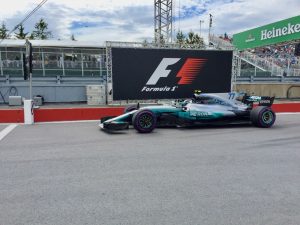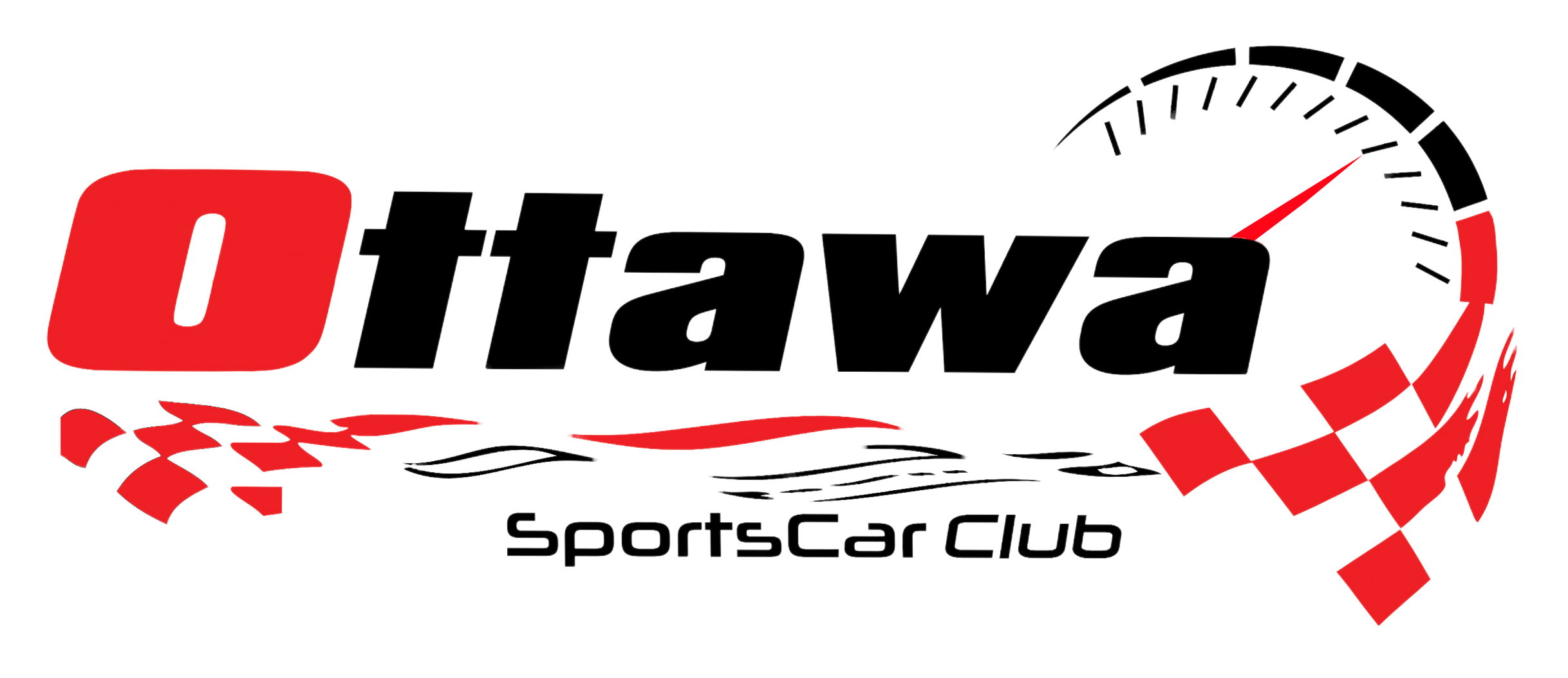What’s it like being a Clerk of the Course at the Canadian Grand Prix in Montréal? Read Richard Muise’s account of this high-stress job!
Being Clerk for a session is a high-stress job. There is a huge amount of information being received (multiple concurrent audio streams in both official languages), and you have to be immediately prepared to make the right decision while working with the Series officials and the hundreds of volunteers around the circuit. Meanwhile, tens of thousands of spectators are watching everything. My heart rate is higher at the start of a session in Race Control than when I am starting a race in my Miata!
The key is to filter the information for critical moments and voice inflection, not get overly focussed on the video monitors (i.e. don’t become a spectator), have a plan in your head for most situations so you can just implement what you already planned, be very communicative with the Series officials, and be clear and concise in your commands when needed.
And at the end of a good session, the feeling of accomplishment is wonderful!
Since 2015, I’ve had the very great pleasure and challenge of being one of the Clerks of the Course for the Canadian Grand Prix in Montréal. We are all members of l’Automobile Club de l’Île-Notre-Dame (ACIND). I have been one of the two Clerks for the Support Series, which in 2019 meant the Ferrari Challenge North America, IMSA Porsche GT3 Cup Challenge Canada and F1600 Canada.
The FIA International Sporting Code states, “The Clerk of the Course is responsible for conducting the Event in accordance with the applicable regulations” and “operations should at all times be under the ultimate control of the Clerk of the Course.” In other words, the Clerk is responsible for running the on-track sessions, bringing local knowledge, while the series Race Director focusses on driver conduct.
The weekend starts on Wednesday morning. The first stop is registration to pick up the credentials, FIA licence, and security wristbands for the weekend. Then the Clerks are off to the media centre to review the Emergency Plan with all stakeholders.
I usually spend time with the Canadian Motorsports Response Team on Wednesday afternoon. They provide all the rescue and extraction services during the weekend. The rescue teams will have already started practicing their driver extractions using a Formula 1 Extraction Simulator (basically a fibreglass cockpit mockup including the halo). The first few times are about gelling as a team and then they start timing and critiquing their practice extractions. On Thursday afternoon, each rescue team has to demonstrate extractions to the FIA in one of the Formula 1 team garages.
Wednesday afternoon or Thursday morning, the Clerks, the Chief Starter and Chief Pit Marshal meet with the officials from each series to work out details for the weekend, such as pace-car speeds. We also go over the entrance and egress procedures for pit lane. Circuit Gilles Villeneuve has extremely tight traffic flow due to limited access along the rowing-basin road. Pit Lane is only accessible from the track, so the timing of moving series from their support paddock north of the hairpin and down into pit lane and back is important to co-ordinate.
Thursday morning is the track and pit lane inspection with the Formula 1 Race Director and event promotor. We examine every fence, wall, sign, advertisement (also called hoarding), curb and drain. It takes just over an hour to complete the inspection.
Late Thursday afternoon, the Clerks attend the Drivers’ Meetings for each Support Series to answer any questions that may come up.
Friday morning is when rubber hits the pavement. It’s Go-Time! The key document for the weekend is the minute-by-minute schedule. Every official has a paper copy and it is followed rigorously. One of the first items every morning is the clock synchronization for everyone on the radio networks. The minute-by-minute is extremely detailed, and even down to the second-by-second for timings like the RCAF flyover and the Formula 1 start procedures. To cover the three days, the minute-by-minute is 46 pages long.
The new pit buildings and Race Control were inaugurated this year. FIA President Jean Todt was on hand to unveil the Charlie Whiting Race Control. This is our office for the next three days.
Race Control is a large, windowless room on the ground floor, just feet from pit lane. The front of the room is full of TV monitors —half are from Formula 1 Group (the commercial rights holder), and half are local circuit CCTV. Every monitor is labelled with the location of the camera, the nearest signal or marshal station, and the nearest rescue vehicle. In the middle are timing screens and a monitor for replays. The replay monitor is colour-coded to prevent anyone from mistaking a replay for a live event.
There are two rows of seats. The dispatchers, corner communicators and video operators sit at the front. There are separate dispatchers for rescue vehicles, tow, and cleanup. There are two separate radio networks for the flaggers. One of the unique aspects of the Circuit is that we also have two boats with RCMP divers ready to assist if something should happen in the canals around the Casino or the rowing basin.
The back row is for the Chief Medical Officer, Clerks, Race Directors, and the Formula 1 officials. Formula 1 brings many specialized consoles for tracking the timing and sector data, the signalling light panels and start bridge lights, and the location of all vehicles including the safety and medical cars.

Race Control is surprisingly quiet. Everyone wears a headset with microphone and we communicate with each other on a local audio channel. The calls from the corner marshals are also broadcast into that channel so that we are all aware of what’s happening. Race Control is bilingual — radio calls can be in either official language. It makes for a high-information-processing environment and you have to really be on your toes!
One Clerk is assigned to each Support Series, and they work with that series throughout the weekend. The other Clerk is there to provide support and offload. One example is to have the primary Clerk operate the on-track, while the secondary Clerk reports less urgent information to the series Race Director, such as drivers cutting the track. Translating these corner communications from French to English for the series that do not have any French-speaking staff is part of this task.
During the Formula 1 sessions, I have no official responsibilities. This leads to one of the best aspects of the job: the access. My credentials allow access to anywhere in the pit lane or paddock area —the only exception is the Formula 1 pre-race grid walk. During the practice sessions, I like to go to pit lane and stand next to pit out. Each Formula 1 car will stop there and perform a clutch-bite test followed by a practice start. It’s a popular place for off-duty Race Control staff – only a concrete barrier and catch fence between us and the screaming Formula 1 engines. On Thursday, I can watch the pit-stop practice in pit lane. Or wander through the paddock and pass by all the Formula 1 drivers or Team Principals or celebrities (for me, that means the late Niki Lauda or Martin Brundle or David Coulthard or Gerhard Berger, not some movie star).

During the 2019 Grand Prix, I spent most of the Formula 1 sessions a the corner of Race Control watching, learning, listening. If I thought it was high pressure during the Support Series, the world is literally watching everything that happens during the Formula 1 sessions. It takes big shoulders to handle it, and I have much respect for François Rémillard, the overall Clerk. He remains calm, with a good sense of humour, but can drill down a problem and fix it very quickly. And I have also learned so much over the last 5 years from the other Clerks: Dany, Cindy, Bob, and Marcel.
Looking back on the last five years, the learning curve has been very steep, and I had many moments of doubt. But with experience comes confidence and each year is better; each year I grow and mature as an official.
Being part of a big event starts with volunteering at the local level. If you want to see how becoming a race official or volunteer worker can lead to amazing experiences, consider the Calabogie Challenge series and the training available on April 25th at Calabogie.
